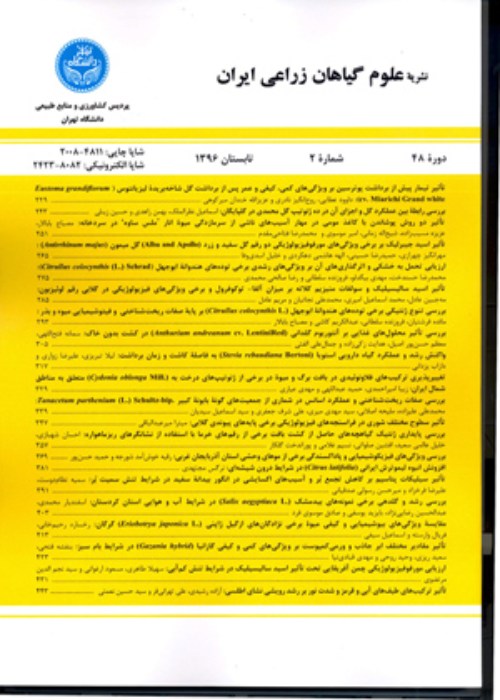Investigating the Stability of Promising Bread Wheat Genotypes in Cold Climate Using AMMI and GGE Biplot Analysis
x
Studying the nature of the genotype×environment interaction provides the possibility of identifying stable and compatible genotypes for breeders, and it has always been one of the important issues in the production and release of new stable and high-yield cultivars in breeding projects. The current research was conducted with the aim of identifying the response of genotypes in each of the studied areas, based on AMMI and GGE biplot models and better understanding of the genotype×environment interaction and determining the level of public and private stability of cultivars. Twenty facultative and winter wheat genotypes were cultivated and evaluated in nine regions (18 environments) during the two crop years of 2017 to 2019 in a randomized complete block design with three replications. In order to analyze the compatibility and stability of genotypes, AMMI and GGE biplot models were used. The results of AMMI analysis showed that the main effect of genotype, genotype×environment interaction effect and the first six principal components were significant at the 1% probability level. The first and second principal components explained about 51% of the sum of squares of the genotype×environment interaction effect. Based on SSiASV and SSiWAAS simultaneous selection indices, genotypes G13, G1, G3, G2, G6, G16, and G7 were identified as the best genotypes. Biplot analysis showed that the genotypes G1, G3, and G6 with average yield had the highest general stability compared to other genotypes. None of the genotypes can be considered as desirable genotypes that have high average yield and high yield stability, but genotype G16 and in the next stage the genotypes G1 and G13 were close to the ideal genotype. Polygon biplot model divided environments into two environmental groups (macro environment) and genotypes into four groups. The first environmental group included Kar1, Kar2, Qaz1, Qaz2, Ham1, Ham2, Mia2, Egl1, Jol2, Ard2, and Ara1 environments, with G16, G17, and G4 genotypes having the highest yield. The second environmental group included Mas1, Mas2, Mia1, Ard1, Jol1, Ara1, and Egl2 environments, and in this macro environment G2, G11, G7, and G12 genotypes had the highest yield. Finally, the examination of the relationships among the environments showed a very high correlation among the investigated environments, which indicated the similar behavior of the genotypes in the most of the tested environments.
- حق عضویت دریافتی صرف حمایت از نشریات عضو و نگهداری، تکمیل و توسعه مگیران میشود.
- پرداخت حق اشتراک و دانلود مقالات اجازه بازنشر آن در سایر رسانههای چاپی و دیجیتال را به کاربر نمیدهد.




